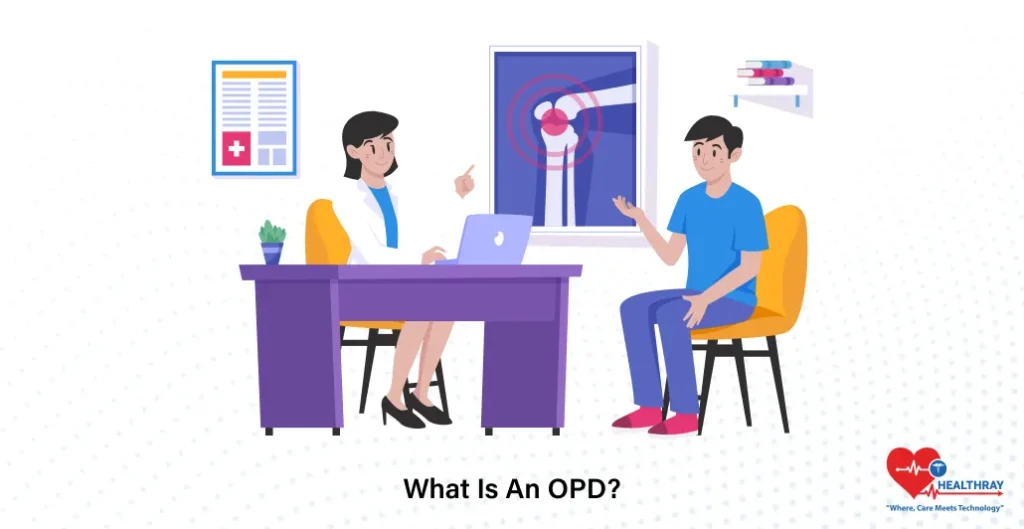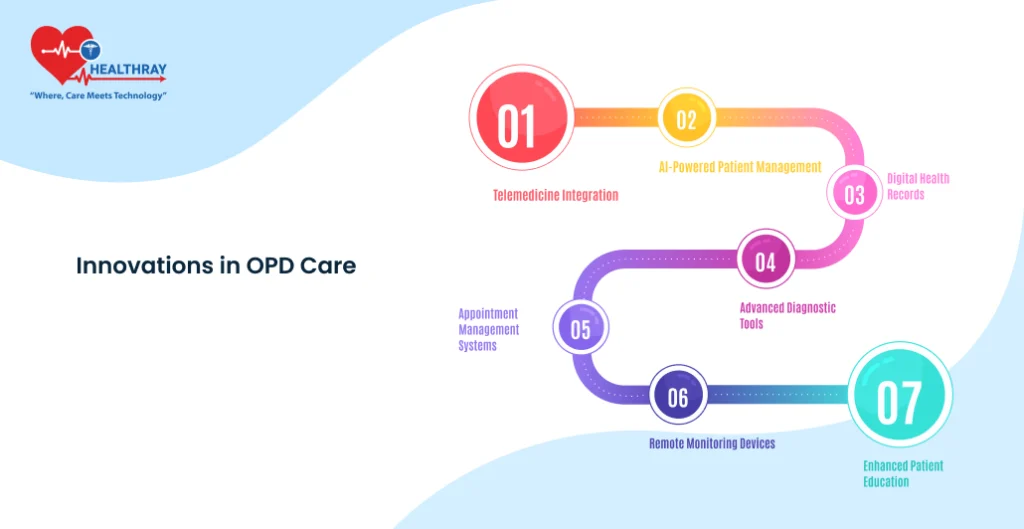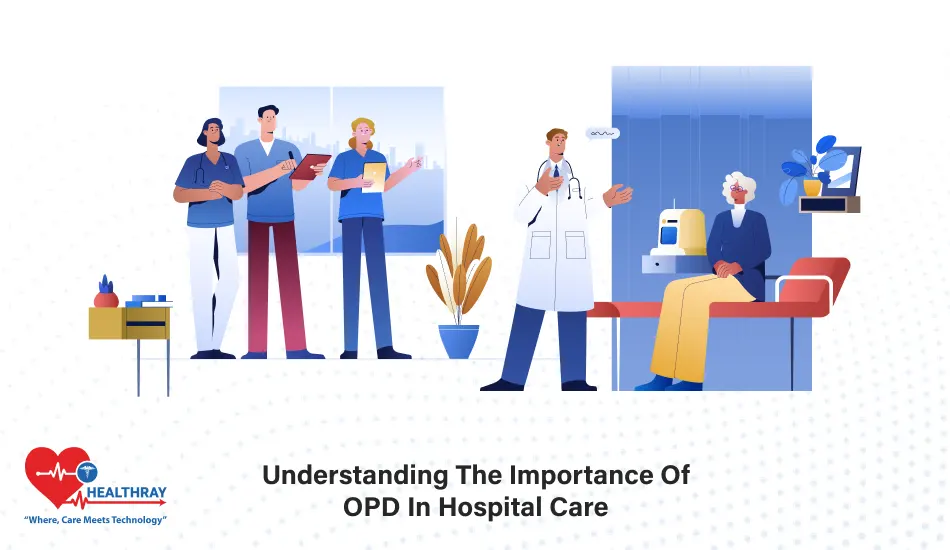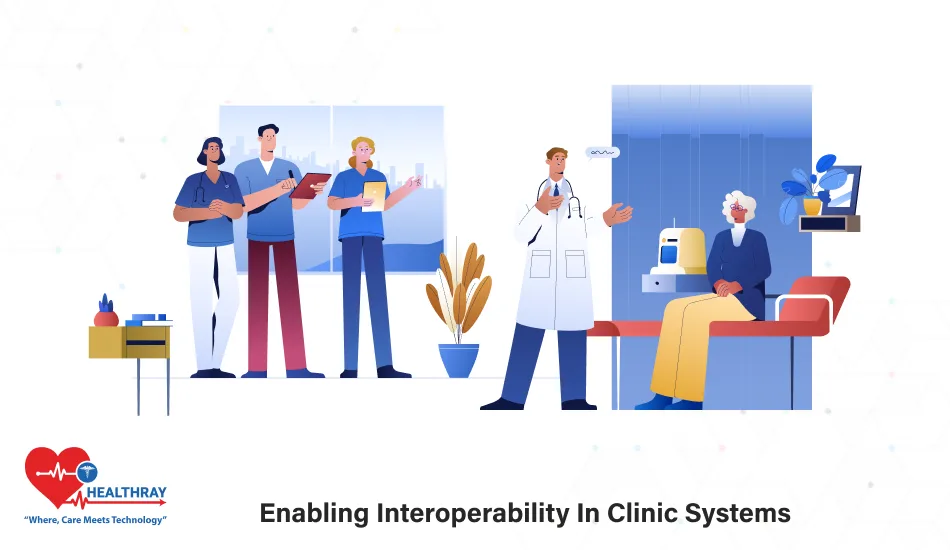OPD forms represent the starting point in the journey of seeking healthcare. This is a focal site for investigations, consultations, minor treatments, and preventive care which do not require hospital admission. And, have their only contact with the health care system there, and for many this may be the very first time.
The OPD is very important. Think about it: patients avail themselves of medical advice and treatment without the bother of an admission. The healthcare professional relies on the OPD to manage patient flow and optimize resources. For the hospital administrator, it’s where efficiency begins. And for the medical student, it’s a learning ground.
Automate the activity of booking an appointment in seconds and intimate physicians or patients about it. Consolidate all the prescriptions on an excel sheet or integrated healthcare portal. Patients visit health practitioners for advice, and also for complete prescription services go to administrators.
The following article explores the importance of the OPD and its relationship with healthcare providers, administrators, students, and patients. We discuss several benefits, challenges, and innovations that make OPD a cornerstone in hospital care. Whether you are a professional or patient, you will leave knowing why the OPD matters.
What is an OPD?

First, let’s elaborate on what OPD is in hospitals and explore its key features. The OPD management Software is one of the major departments in any hospital, meant to provide medical services without an overnight stay. That is where consultations, follow-ups, diagnostic tests, and minor procedures are offered.
Core features of an OPD:
- Consultations: These are patients visiting specialists in various fields of expertise to discuss symptoms, diagnoses, and treatment. Most of the time, this is where the beginning of a healthcare journey starts.
- Diagnostics: Most OPDs have their lab and imaging facilities, enabling immediate tests such as bloodwork, X-rays, or ultrasounds.
- Preventive care: Most hospital OPDs offer vaccinations, health checkups, and wellness counseling that help prevent illnesses.
- Minor procedures: Several interventions or surgeries that do not require hospitalization, like care of wounds and biopsies, are performed in the OPD.
Why Does the OPD Matter?
The OPD forms a link between the community and the hospital. In this way, relatively easy healthcare is provided. Patients are treated quickly, which saves them much time.
From the hospital’s perspective, this service allows inpatient services to be used only when absolutely necessary.
The OPD thus constitutes the backbone for outpatient care, attending to a wide range of medical needs, catering to convenience and affordability.
Key Functions of OPD In Hospital
The OPD has a versatile role in hospital care and serves as a focal point for different stakeholders. Each of these perspectives-whether being a healthcare professional, an administrator, medical student, or patient-sees the functions of the OPD differently. Here’s how the OPD addresses each of their needs:
For Healthcare Professionals and Administrators:
- Smoothening the Patient Flow: OPD is designed to manage a large volume of patients daily to ensure those with less critical needs are managed without taxing the in-patient services.
- Resource optimization: Better bed management and utilization, manpower, and equipment.
- Improved Patient Outcomes: Professionals on the job can monitor patients regularly so that any health issues can be found early on and treated in time.
- Data Collection: OPDs generate data on patient demographics, health trends, and resource utilization, which administrators use to drive decision-making.
For Medical Students:
- Learning ground: Exposure to actual patient care is provided in OPDs. Students observe and participate in consultations regarding diagnosis and treatment planning.
- Knowledge of workflow: They know how the different departments interact and understand how care transitions from outpatient to inpatient if that is needed.
- Skill Development: OPDs are used for hands-on training in skill development, from communicating with patients to performing basic clinical procedures.
For Patients:
- Accessible health care: The OPDs facilitate access to specialists in a non-intrusive manner without the hassles of hospital admission.
- Continuity of Care: Patients can return for follow-ups and routine check-ups, building long-term relationships with their providers.
- Convenience and Cost-Effectiveness: Visits are quicker and less expensive than inpatient services.
- Preventive care: It involves the provision of health education, screening, and immunizations to prevent serious illness.
Benefits of OPDs
The OPD forms part and parcel of hospital care, with a number of benefits that accrue to the healthcare provider, administrator, and the patient. Its design and purpose ensure that healthcare is far more efficient, accessible, and cost-effective. Let us break down the key advantages:
Accessibility to Routine and Preventive Care
- The first port of call for patients seeking non-emergency medical treatment is usually the OPDs.
- They ensure quick consultations, thus making healthcare services more accessible to the general public.
- OPDs offer vaccinations and health screenings, among other preventive forms of care.
Affordable Healthcare
- OPD care also costs less compared to inpatient care because it avoids all additional costs related to room charges and extended stays.
- In the case of chronic patients, frequent OPD visits may minimize long-term medical expenses by solving the problem at an early stage.
Early Diagnosis and Intervention
- Similarly, OPDs help in the early detection of diseases with the availability of diagnostic tools such as labs and imaging services.
- Early intervention often leads to better treatment outcomes and helps avoid complications that could require a person to be admitted into the hospital.
Efficiency in Hospital Operations
- OPDs, by segregating the outpatient cases, free up the in-patient resources for critical and emergency cases.
- The structured approach improves hospital workflows and diminishes patients’ waiting times on admission.
Improved patient satisfaction
- By offering consultations, diagnostics, and minor procedures all under one roof, OPDs provide a seamless experience.
- Patients benefit from shorter wait times and transparent information on their treatment.
- Care and follow-up visits offer ongoing support with improved health outcomes.
In fact, OPD design not only helps individual patients but also contributes to improving the entire healthcare system because of its balancing effect on care delivery and resource utilization.
Challenges in Managing OPD In Hospital
Though the OPD is important, there is a whole new set of challenges that come in managing it. A few challenges impact the working of the department and quality care given to the patients. The following are some of the common challenges faced in the OPDs:
High Volume of Patients and Long Waits
Problem: Inflow of large numbers of patients in OPDs results in overcrowding and a long waiting time.
Impact: Patients are dissatisfied, while health professionals are under added stress to manage caseloads.
Solution: Using an appointment system and triaging can help prioritize patients in order of urgency.
Limited Resources
Problem: Inadequate staffing, lack of diagnostic facilities, and space disadvantages hinder the functioning of OPD.
Impact: This results in delays in diagnosis, hurried consultations, and an overworked staff.
Solution: The regular assessment of resources and investment in technologies, including digital health tools, will help optimize workflows.
Scheduling Inefficiencies
Problem: These could be due to walk-in patients, missed appointments, or lack of coordination between departments.
This results in wasted time and resources being underutilized.
Solution: Adoption of digital scheduling systems that remind and send updates in real-time will ease the process.
Communication Gaps
Problem: Communication gaps among health practitioners, staff, and patients lead to much perplexity about the treatment or follow-up.
Impact: This negatively impacts patient outcomes and leads to care delivery inefficiencies.
Solution: Staff training in effective communication, along with the use of centralized patient records, ensures that misunderstandings are minimized.
Balancing Emergency and Non-Emergent Cases
Problem: Most of the OPDs keep urgent and routine cases together, thus burdening the system.
Impact: The department cannot attend to urgent cases immediately, as it is already burdened with less critical patients.
Solution: Triage systems allow prioritization to ensure that patients with conditions that are most life-threatening are treated first.
Integration with Technology
Problem: Most OPDs face similar challenges with the adoption and use of modern technologies, such as telemedicine and electronic health records.
Impact: This consequently restricts their capabilities for quicker and more effective care.
Solution: The problem can be overcome by training and gradually introducing user-friendly systems.
Efficient OPD management software should confront these challenges head-on with innovative strategies and well-drawn processes. These barriers, when crossed, will make the operations far smoother and result in better patient care.
Innovations in OPD Care

New approaches to healthcare delivery and advanced technology have brought many changes to OPDs. Innovation in health care has not only improved the quality of patient care but also eliminated unnecessary waste, thus improving the experience of both patients and providers. Some of the most important innovations that will shape the future of the OPDs are discussed below:
Integrating Telemedicine
What It Is: Virtual consultations through video calls and online platforms.
Impact: The patients can consult doctors without coming to the hospital. It minimizes the queue and uses time more intelligently.
Example: Follow-ups of chronic conditions such as diabetes or hypertension can presently be done remotely.
AI-Powered Patient Management
What it is: AI technologies are being used for appointment scheduling, patient triage, and record-keeping.
Benefits include: AI helps to speed up identification of urgent cases, smoothes workflows, and ensures resources are utilized correctly.
Example: Chatbots walk patients through preliminary assessments and save time for the doctors.
Digital Health Records
What It Is: Shifting from paper-based systems to electronic health records.
Impact: It enhances interdepartmental communication, reduces mistakes, and makes all patient history readily available.
Example: For example, doctors can access lab results in real time and make decisions faster.
Advanced Diagnostic Tools
What it is: The use of portable and high-tech diagnostic devices in the OPD.
Impact: This therefore leads to enhanced quality of care through speedy and precise diagnostics.
Example: Such a point-of-care ultrasound device allows imaging studies to be performed directly in the consultation room by the physician himself.
Appointment Management Systems
What It Is: Digital platforms for booking and managing appointments.
Impact: These systems reduce crowding and waiting times through proper scheduling.
For example: through the application, patients can receive reminders and reschedule, thereby avoiding wastage of any slot.
Remote Monitoring Devices
What it is: Wearables and mobile apps that monitor patient health metrics such as blood pressure, glucose levels, and heart rate.
Impact: Such tools allow doctors to monitor patients in between visits for proactive care.
Example: Smartwatches are being used by patients to share real-time data with the physician for ailments related to the heart.
Improved Patient Education
What it is: Digital tools and kiosks offering health education in the OPD waiting areas.
Impact: Informed patients will make better health-related decisions and also comply with their treatment plans.
For example, interactive screens could explain procedures, medications, or lifestyle changes.
These are some of the innovations revolutionizing how OPDs currently work; they are more patient-friendly and efficient. And since technology keeps evolving, the scope for improvement in OPD care is still huge.
How Patients Can Make the Most of OPD Visits
For most patients, a visit to OPD is the starting point toward the resolution of a health concern. A well-utilized interaction assures the best possible outcomes and easiest experiences. Following are practical tips that can help any patient achieve the most from his/her OPD visit:
Prepare Before the Visit
What to Do: Write down your symptoms, medical history, and any medications you are taking. Jot down any questions or concerns you would like to talk about.
Why It Helps: Being prepared saves time and ensures you don’t forget important details during the consultation.
Bring All Relevant Documents
What to Do: Bring all previous medical records, lab reports, prescriptions, and any imaging results, if applicable.
Why It Helps: Complete information will help your doctor in arriving at an accurate diagnosis and treatment.
Arrive early
What to Do: Arrive at the OPD at least 15 minutes before your appointment.
Why It Helps: This allows you the time needed to complete any paperwork, if needed, and reduces stress from feeling rushed.
Be Honest and Clear
What to Do: Describe your symptoms clearly, how long you have had them, and how they affect your daily life. Don’t withhold information because you’re embarrassed.
Why It Helps: Open communication with your doctor will ensure that he has all the information to provide effective care.
Ask Questions
What to Ask : if you don’t understand your diagnosis, treatment options, or medicines.
Why It Helps: Informed patients can better adhere to their treatments and make healthier decisions about their conditions.
Take Notes During the Visit
What to do: Write down key things, such as your diagnosis, any medicines prescribed, and any follow-up instructions.
Why It Helps: This helps you remember instructions and share accurate details with family members or other healthcare software providers.
Follow post-visit instructions
What to do: Take medications as prescribed. Make any necessary lifestyle changes. Go to all follow-up appointments.
Why It Helps: Compliance ensures better recovery and reduces the chances of complications.
Use Digital Tools
What to Do: Utilize appointment scheduling, report retrieval, or communication with your doctor through apps or hospital portals.
Why It Helps: Digital tools can make it easier to manage your health and stay organized.
Being proactive and prepared, patients can have productive OPD visits that result in better health outcomes.
Conclusion
The OPD acts as a very important link between the community and the hospital through accessible, affordable, and efficient health care. For the patients, this is their first step toward diagnosis and treatment. Among health professionals, it’s a key part of the delivery of care, resource hospital management system, and interaction with the patient. For medical students, it’s a hands-on learning environment preparing them for the complexities of clinical practice.
Although OPDs face various challenges like high volumes of patients and resource constraints, innovation around telemedicine, integration of AI, and enhanced patient management systems is redefining how these departments work. Addressing these challenges opens up more avenues for OPDs to continue playing an indispensable role in modern healthcare.
The knowledge of the importance of OPDs from a medical professional’s or student’s perspective, or that of a patient, would probably help in learning to steer and use this facility accordingly. The future of the OPDs will definitely evolve from here and be even more efficient and patient-friendly.





